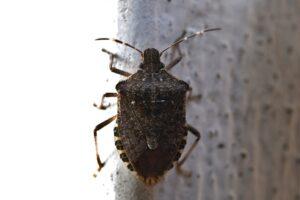ATK researchers have developed a new type of trap to reduce invasive bugs
Researchers from the Plant Protection Institute (ATK NÖVI) of the ELKH Agricultural Research Center have developed a new bug trap using an artificial heat source.

(Photo: Pixabay)
According to the ELKH’s announcement on Friday, the scented traps, which have been used in crop cultivation for a long time and were also developed by ATK NÖVI researchers, and the new environmentally friendly method will make it possible to reduce invasive bugs that cause great damage in crop cultivation over a longer period of time. The use of heated traps is effective precisely in the period when the effectiveness of pheromone traps decreases. As it was written, several invasive bug species – such as the marbled bug (Halyomorpha halys) or the wandering bug (Nezara viridula) – appeared and multiplied massively in Hungary. Bugs cause a lot of damage in small gardens and in foil tents for growing plants. As it was written, while plant growers are “annoyed” by them throughout the season, city dwellers mostly only encounter them in the fall when they migrate for the winter.
This is the basis of the type of trap designed and built by ATK NÖVI researchers
In September and October, i.e. during the hibernation period, the mentioned bug species look for places that provide them with better survival. These are generally warmer than their surroundings, well-protected, often man-made landmarks and dwellings. The traps developed by the researchers therefore use an artificial heat source to attract the bugs. During the development, a thermostatically controlled heating plate was placed inside the trap body, with the help of which a favorable wintering place for the bugs is simulated. The new trap is completely environmentally friendly, does not contain any toxic chemicals, and can be used by the general public.
The publication presenting the results of the researchers was published in the scientific journal Acta Zoologica Academiae Scientiarum Hungaricae.
MTI
Related news
NAK: the year begins with difficult conditions in agriculture
🎧 Hallgasd a cikket: Lejátszás Szünet Folytatás Leállítás Nyelv: Auto…
Read more >Agrometeorology: snow and cold are favorable for agriculture
🎧 Hallgasd a cikket: Lejátszás Szünet Folytatás Leállítás Nyelv: Auto…
Read more >AM: Tax and administrative burdens for farmers to be reduced from January 1
🎧 Hallgasd a cikket: Lejátszás Szünet Folytatás Leállítás Nyelv: Auto…
Read more >Related news
The 6 most important payment trends in 2026:
🎧 Hallgasd a cikket: Lejátszás Szünet Folytatás Leállítás Nyelv: Auto…
Read more >Tourism continues to expand dynamically
🎧 Hallgasd a cikket: Lejátszás Szünet Folytatás Leállítás Nyelv: Auto…
Read more >FEOSZ creates a certificate for consumer-friendly web stores
🎧 Hallgasd a cikket: Lejátszás Szünet Folytatás Leállítás Nyelv: Auto…
Read more >







